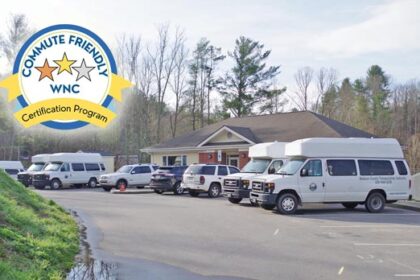
Results from the soil/sediment samples MountainTrue took in Marshall, NC, the week after Helene are finally in.
Almost a dozen water and sediment samples were taken around the watershed. Partial results from a test for 135 pollutants indicate that only two were present, isopropltoluene and trimethylbeneze.
Out of those two, trimethylbeneze appears to be the one with the most health concerns. This pollutant is associated with petroleum and can present serious human health hazards. However, the scientific literature varies on what levels are problematic in sediments. MountainTrue found trimethylbenzene at 23.9 ug/kg, which isn’t sky-high, but they recommend avoiding skin and eye contact and using proper protection when working in or around the mud.
As more volunteers participate in river clean-ups and other recovery activities, many will be coming into contact with mud, sludge, sediment, and dust left behind by the storm. These materials may contain higher levels of pollutants and contaminants, so it’s important to take the necessary precautions to protect yourself.
If Your Garden Was Exposed to Floodwaters
Here is some information for farmers and gardeners from the Organic Growers School.
- Avoid compacting wet soils in/around your garden.
- Wear protective clothing, including gloves, shoes, and a mask.
- Remove and discard (NOT compost) the entire plant, including roots, even if it looks edible and undamaged. This includes leafy greens, root crops, and crops with a hard outer skin (winter squash). Any leafy greens, berries, or other soft fruits that have had only indirect contact with floodwater should also be discarded, as they are challenging to wash.
- Cooking or canning will not eliminate the risk posed by industrial pollutants.
- After disposal, thoroughly wash your hands and dry with a paper towel or cloth.
- Prevent cross-contamination by cleaning surfaces, tools, and harvesting equipment with disinfectant such as bleach solution (one part bleach to nine parts water) or alcohol.
At a minimum, do not replant edibles in a previously flooded area for 60 days. For root crops, the waiting period is 100 days. Do not harvest crops from such areas within 90 days.
See the full article at www.organicgrowersschool.org/blog/post-hurricane-garden-care.
Vegetable, Herb, and Fruit Gardens Exposed to Floodwater
Floodwater that has washed in from rivers, creeks or streams can bring in chemical contaminants like petroleum-based products and also biological pathogens and parasites from flooded sewage treatment plants, and animal operations. In addition, wet produce may grow toxic mold.
Discard (do not compost)
- The entire plant with produce that has come into direct contact with floodwater, even if it has not been completely submerged. Including:
- Surface crops such as leafy greens, tomatoes, and corn;
- Underground crops such as peanuts and sweet potatoes; and
- Crops with a hard outer skin, such as watermelon and winter squash.
- Leafy greens, berries and other soft fruits that are difficult to wash even if they have only had indirect contact with flood water.
More information is available from the NC State Extension, gardening.ces.ncsu.edu/weather-2-2/handling-storm-damage-in-the-landscape/vegetable-herb-and-fruit-gardens-exposed-to-floodwater.
After your clean-up activities, be sure to shower as soon as possible to remove any remaining contaminants from your skin and clothing.









